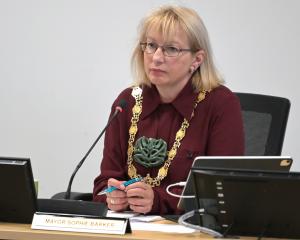The country's Christmas/New Year news reports have been, yet again, filled with reports of drownings and other water-related incidents.
In 2009, according to official statistics, there were 99 drownings in New Zealand; in 2008, there were 98.
Some are the result of misadventure, some are medical events, and still others come during or after heroic attempts to save others.
On Tuesday last week alone, NZPA reported on two drownings and another water-related death.
In one, a grandfather drowned after saving his grandchildren on Ninety Mile Beach in the Far North.
The man has been hailed a hero after he plunged into sea off the west coast beach when he saw the youngsters trapped in a rip.
He held his grandson's head above the water until another rescuer took the child ashore, while a third rescuer saved his granddaughter.
Someone else tried to help him but he slipped beneath the waves and drowned.
In the other drowning the same day a 38-year-old woman lost her life when she was swept away while riding a horse across Wairarapa's Ruamahanga River.
Unfortunately, the New Year has began badly.
A father died off Glenbrook Beach, south of Auckland on Saturday after he leapt into a dangerous current to rescue his son and daughter.
He handed his daughter to another rescuer and to safety and then held his son above the water.
While buying enough time for the boy to be saved, he perished.
Further north, an 18-year-old died after leaping from a 24m waterfall into a pool near Whangarei on New Year's Day.
Of course, there is nothing new about drowning in this country.
According to the Ministry for Culture and Heritage's TeAra Encyclopedia of New Zealand, Maori history tells of drowning incidents; by 1870, just a few decades after the arrival of European settlers, rivers had been responsible for 1115 recorded drownings and drowning became known as "the New Zealand death".
Drowning remains New Zealand's third highest cause of accidental death, behind traffic incidents and falls.
Annual drowning statistics date back only to 1980; the number of drowning deaths peaked at 214 in 1985.
The average during the past few years is 109.
As always when you reduce human suffering to simple statistics, it is easy to forget that each one of those 109 is a person: someone's father, mother, daughter, cousin or grandchild.
The sense of loss and tragedy for each family is real and raw.
Water Safety New Zealand believes that much of the improvement in drowning rates can be attributed to the success of initiatives to raise awareness of water safety as an important social issue.
It says the improved delivery of targeted educational initiatives has also contributed, but far too many people continue to lose their lives, frequently in preventable circumstances.
WSNZ's website states that pre-school children are one group constantly at risk; tragically, incidents among this group nearly always involve a lack of appropriate supervision.
Among adults it says men aged between 18 and 35 dominate statistics, and this can be partly attributed to an increased likelihood to participate in activities with an increased level of risk.
Drownings of various kinds will always happen, be they the result of a parent's inattention, risk-taking (foolhardy or otherwise), or unavoidable tragedy.
However, the fact is that New Zealand is an aquatic environment.
Most of us spend much of our leisure time in, beside, or on the water, be it river, lake or sea.
As such, it is inherent that, collectively, the ability to swim and to survive be seen as a priority for ourselves and our offspring.
Learning to swim should be seen as a normal - and mandatory - part of childhood, no matter one's cultural background or socio-economic status.
As such, it is a concern that research undertaken by WSNZ shows misconceptions in our communities about the level of swimming ability and the opportunities provided for learning to swim.
WSNZ says that fewer than 25% of 12-year-old New Zealanders are able to swim 200m.
This is simply not good enough.
There are numerous boundaries stopping people from learning to swim, including many primary schools no longer having pools, families being unable to afford lessons, and changes in the cultural make-up of many of our communities.
Nevertheless, solutions to these restrictions - especially those caused by a lack of personal or parental responsibility - must be found if we wish to prevent even more deaths by drowning.











